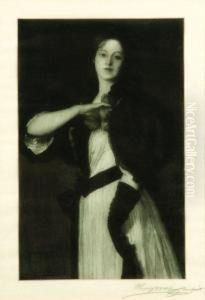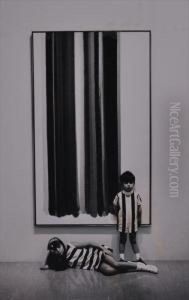Henry Wolf Paintings
Henry Wolf was a renowned wood engraver, born on August 3, 1852, in Eckwersheim, Alsace, which was then part of France. His life spanned an era of significant transitions in the art world, particularly in the medium of printmaking.
Wolf's early life was marked by his move to the United States at the age of 14. He settled in New York City, a burgeoning hub for artists, writers, and illustrators. In an age when the art of wood engraving was highly esteemed for the reproduction of images, Wolf quickly immersed himself in the craft. He apprenticed under the well-known engraver William J. Linton, who was instrumental in shaping Wolf's skills and artistic sensibility.
Wolf's career flourished in the late 19th and early 20th centuries. He became one of the most respected and prolific wood engravers in America. His work was characterized by a meticulous attention to detail and a commitment to high standards of craftsmanship. Wolf's engravings were primarily used for reproductions of paintings, illustrations for books and magazines, and standalone prints. He was a master at capturing the subtleties of light and shadow, which gave his engravings a distinctive, almost ethereal quality.
Throughout his career, Wolf was a staunch advocate for the wood engraving medium, which faced competition from newer reproductive technologies like halftone processes. Despite these challenges, he continued to produce work that garnered critical acclaim and was collected by art enthusiasts of the period. His engravings were featured in prestigious institutions, including the Metropolitan Museum of Art in New York and the Smithsonian Institution in Washington, D.C.
Henry Wolf's dedication to his craft earned him numerous accolades. He was a member of various art societies, including the National Academy of Design, where he was an academician. He also served as the president of the Society of American Wood Engravers.
Wolf's legacy is that of a master engraver whose work bridged the gap between the worlds of fine art and illustration. He contributed greatly to the appreciation of wood engraving as an art form during his lifetime and beyond. Henry Wolf passed away on May 20, 1916, leaving behind a rich body of work that continues to be studied and admired by art historians, printmakers, and collectors.

